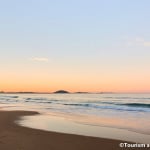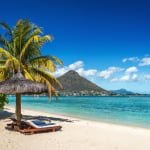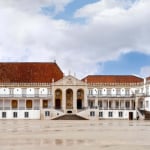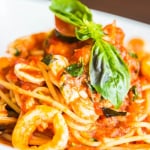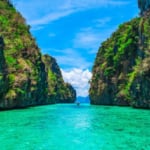Name: Rias Ark Museum of Art
Address: 138-5 Akaiwa Makizawa, Kesennuma City, Miyagi Prefecture
Official/Related Website: http://riasark.com
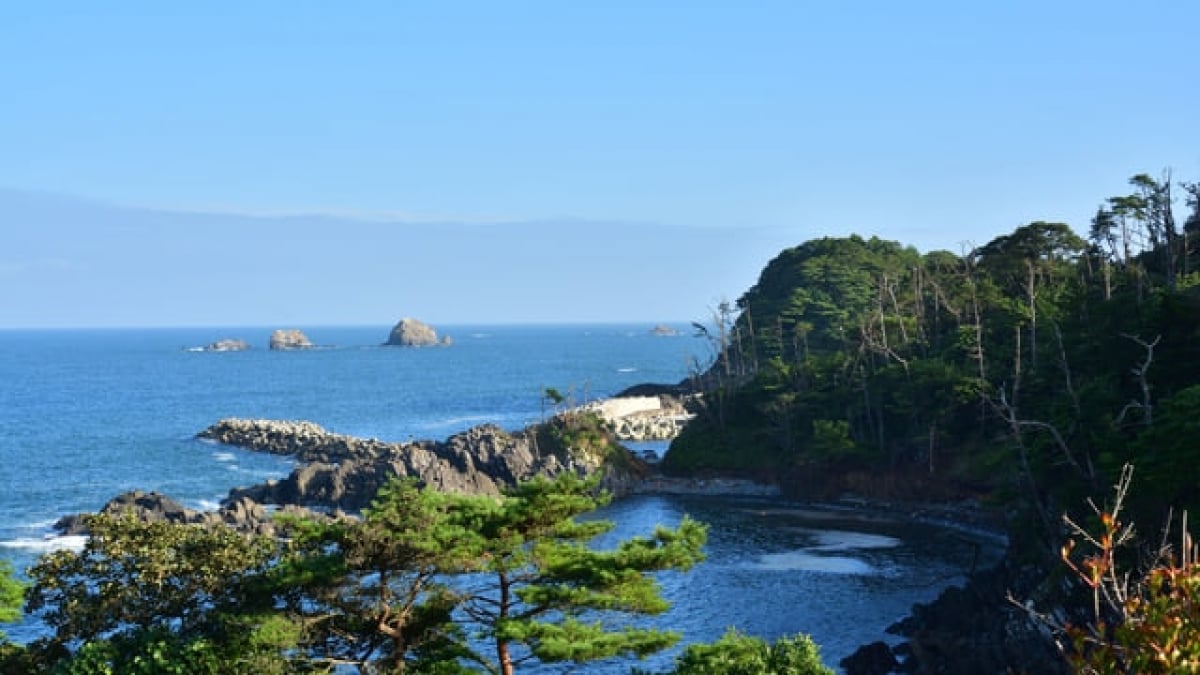
Not just fresh seafood! 14 must-visit tourist spots in Kesennuma
Kesennuma is a town blessed with rich fishing grounds and has long been famous for its abundance of seafood. When you think of a port town, images of delicious fish and lively energy often come to mind—and Kesennuma is exactly that kind of place. Wherever you go, you can enjoy fresh seafood, and wherever you visit, you’ll be greeted by the warm smiles of the people.
Kesennuma boasts a coastline with the intricate shapes characteristic of a ria coast. The landscape, shaped naturally by the erosion of waves, has made it a scenic and well-known tourist destination throughout Japan.
A visit here will surely leave you feeling energized. Now, let’s introduce some of Kesennuma’s carefully selected sightseeing spots that serve as power spots in their own right!
table of contents
[x] close
Not just fresh seafood! 14 must-visit tourist spots in Kesennuma
- 1. Rias Ark Museum of Art
- 2. Kesennuma Umi no Ichi / Shark Museum
- 3. Fukkou Yatai Mura Kesennuma Yokocho
- 4. Kesennuma Reconstruction Shopping Street Minamimachi Murasaki Market
- 5. Kesennuma Osakana Ichiba (Fish Market)
- 6. Kesennuma Plaza Hotel
- 7. Kesennuma Oshima
- 8. Iwaisaki "Shiobuki Rock"
- 9. Iwaisaki "Raigorou Statue" and "Dragon Pine"
- 10. Ogama Hanzo and Oreishi
- 11. Hayama Shrine and Intangible Folk Cultural Assets
- 12. Marble Coast (Dairiseki Kaigan)
- 13. Michi-no-Eki Otani Coast (Roadside Station Otani Coast)
- 14. Anba Mountain – Also Recommended for Night Views
- ◎ Summary
1. Rias Ark Museum of Art
One of the places you should definitely visit when touring Kesennuma is the Rias Ark Museum of Art. This museum features not only the arts of Tohoku and Hokkaido but also functions as a cultural center that promotes local life, fishing village culture, food culture, and conducts research and exhibits on history and folklore.
As you may know, Kesennuma was one of the areas severely damaged by the tsunami following the Great East Japan Earthquake in 2011. At the Rias Ark Museum of Art, the tsunami is not simply regarded as a natural phenomenon. Instead, they continuously research tsunamis as historical and cultural events, including past disasters, and display various items affected by the tsunami as part of a permanent exhibition documenting regional recovery.
There’s also a restaurant inside the museum that doubles as a café. After touring the area or walking through the exhibits, it’s a great place to relax while enjoying the greenery surrounding the museum and the view of Kesennuma Bay.
The restaurant offers dishes featuring seafood and mountain produce from Kesennuma, making it popular with tourists. Some items require advance reservations (at least a day before), so it’s recommended to check operating hours and make reservations in advance.
2. Kesennuma Umi no Ichi / Shark Museum
Combining the themes of "Gourmet," "Shopping," and "Learning," this major tourist attraction is a fun spot for the whole family. The building itself is creatively shaped to resemble a shark, drawing the attention of passersby.
Inside the spacious facility, there are sushi restaurants and creative seafood dining options that fully embrace the Kesennuma vibe. With so many menu choices, you’ll be spoiled for choice. Being close to the fishing port, you can also expect exceptional freshness.
In the shopping area, you’ll find processed seafood products typical of a fishing town, as well as sweets stamped with Kesennuma’s tourism mascot "Hoyaboya." The wide store area allows for leisurely souvenir shopping.
Speaking of Kesennuma, it’s famous for its shark fins. At the Shark Museum, you can not only eat shark fin dishes but also deepen your understanding of sharks. It reopened in 2015 as Japan’s only shark museum.
The Shark Museum features life-size shark displays with incredible impact. In addition to exploring the lesser-known biology of sharks, the museum offers a comprehensive exhibit on the ocean closely tied to Kesennuma. It’s a fun and fascinating place for kids and adults, tourists and locals alike.
Name: Kesennuma Umi no Ichi / Shark Museum
Address: 7-13 Uoichibamae, Kesennuma City, Miyagi Prefecture
Official/Related Website: http://www.uminoichi.com/
3. Fukkou Yatai Mura Kesennuma Yokocho
In November 2011, with hopes for the recovery of Kesennuma, a temporary shopping street called Fukkou Yatai Mura was established.
It’s filled with food stalls, souvenir shops, and stores selling fresh seafood. Not only tourists but also locals gather here, making it a lively spot. It’s no exaggeration to call it a mecca for Kesennuma tourism. Even among tourist destinations, there are few places where you can interact with locals as much as you can at Kesennuma Yokocho.
You’ll find ramen, udon, tonkatsu, and even Korean cuisine. Of course, you can also enjoy Kesennuma’s signature seafood dishes and tuna. The revived local sake from Kesennuma is also available, so take your time savoring everything Kesennuma has to offer.
Name: Fukkou Yatai Mura Kesennuma Yokocho
Address: 4-2-19 Minamimachi, Kesennuma City, Miyagi Prefecture
Official/Related Website: http://www.fukko-yatai.com/
4. Kesennuma Reconstruction Shopping Street Minamimachi Murasaki Market
As its name suggests, Minamimachi Murasaki Market is one of the temporary shopping streets established to help with the recovery from the Great East Japan Earthquake. It’s conveniently located about a 20-minute walk from JR Kesennuma Station, making it a great stop for tourists using public transportation.
The adjacent parking lot often fills up quickly, showing just how popular this market is. Aside from restaurants, the market includes shops selling daily goods, fresh food, a pharmacy, and even a flower shop. It’s always bustling with energy. You’ll find eateries serving alcohol and food with a laid-back atmosphere, so it’s easy to casually drop in while sightseeing without feeling out of place.
Store hours vary by shop, so it’s best to check in advance if there’s a specific place you want to visit.
Since it’s near the fishing port, the seafood is as fresh and delicious as you’d expect—but don’t overlook their tonkatsu, which is surprisingly good! The croquette shop offers both dine-in and takeout options. If you visit during the day, it might be nice to enjoy some freshly fried croquettes while strolling and taking in views of Kesennuma Bay.
Name: Kesennuma Reconstruction Shopping Street Minamimachi Murasaki Market
Address: 1-1 Hamamiyama, Kesennuma City, Miyagi Prefecture
Official/Related Website: http://kesennumafs.com
5. Kesennuma Osakana Ichiba (Fish Market)
Kesennuma Osakana Ichiba reopened just four months after the Great East Japan Earthquake, and its vibrant energy continues to impress visitors. Just being there can lift your spirits.
At the on-site restaurant, “Minato-machi Restaurant Sen,” you can enjoy Kesennuma’s specialty fresh seafood to your heart’s content. They offer various seafood rice bowls, tuna and pacific saury set meals, ramen topped with an entire shark fin, and even a unique “Fukakatsu Burger” made with shark cutlets. There’s also an a la carte menu, which is perfect for sake enthusiasts.
Everything is delivered straight from the port, so the freshness speaks for itself. Tasting raw seafood here makes the difference clear—it’s a completely different experience! Many visitors find themselves falling in love with Kesennuma’s seafood.
After your meal, you can stop by the fresh fish section and purchase seasonal Sanriku seafood to take home as souvenirs from your Kesennuma trip.
Name: Kesennuma Osakana Ichiba
Address: 2-13 Minato-machi, Kesennuma City, Miyagi Prefecture
Official/Related Website: http://osakana-ichiba.net
6. Kesennuma Plaza Hotel
Kesennuma Plaza Hotel is one of the few places in Kesennuma where you can enjoy a hot spring bath.
It’s about a 10-minute drive from JR Kesennuma Station and conveniently close to the ferry terminal for Oshima sightseeing. Located on a hillside along the coast, its main attraction is definitely the hot springs with breathtaking ocean views.
There are outdoor baths for both men and women, but there’s also the “Scenic Ocean View Bath” with large glass windows offering stunning views of the sea. The hot spring water, salty like seawater, allows your body to float as you relax and stretch out your tired arms and legs from a day of sightseeing. You should definitely give it a try!
One of the hotel’s popular offerings is “Day Trip Bathing,” allowing non-staying guests to enjoy the hot springs during their sightseeing. On “One Coin Day,” you can enjoy these baths at a discounted rate.
Dates for “One Coin Day” vary by month, so check the website ahead of time. Bathing hours are also divided between daytime and evening, so confirm before visiting.
When choosing a place to stay, baths are important—but so is the food! At Kesennuma Plaza Hotel, located right by the fishing port, you can enjoy fresh seafood that has just been landed. Their in-house Japanese restaurant “Kaishuu” offers seafood rice bowls, sushi, set meals, and à la carte dishes, along with a great selection of local sake. It’s a perfect place to savor the flavors of Kesennuma.
Name: Kesennuma Plaza Hotel
Address: 1-1 Kashiwazaki, Kesennuma City, Miyagi Prefecture
Official/Related Website: http://www.pkanyo.jp/
7. Kesennuma Oshima
Oshima, the largest inhabited remote island in the Tohoku region, often referred to as the "Green Pearl" because of its stunning natural beauty. From the summit of Mt. Kameyama, located in the northern part of the island, you can enjoy a panoramic view of this beautiful island. It’s a must-see when visiting Oshima.
The island offers a variety of accommodations, including inns and guesthouses. Prices typically start from around 7,000 yen per night with two meals included. These lodgings boast fresh and delicious seafood along with breathtaking ocean views.
Most activities on Oshima focus on marine sports and beach activities, such as traditional net fishing experiences. However, there are also trekking tours led by guides and rental bicycles available, giving visitors plenty of ways to fully experience the island’s charm.
Unique experiences here include disaster prevention lectures and talks about the Great East Japan Earthquake. There’s also a disaster prevention bay cruise, where a guide will explain the damage from the tsunami while sailing through the bay.
As Kesennuma Oshima was severely affected by the 2011 earthquake and tsunami, you can also participate in volunteer activities such as beach clean-ups and maintaining tourist sites alongside local residents. If you visit Kesennuma Oshima, it’s a meaningful experience you shouldn’t miss.
Name: Kesennuma Oshima
Address: Kesennuma City, Miyagi Prefecture
Official/Related Website: http://www.oshima-kanko.jp/
8. Iwaisaki "Shiobuki Rock"
Iwaisaki is a cape located within the Sanriku Fukko National Park and is a spot that almost every tourist visits.
Made of limestone, Iwaisaki has been eroded by seawater over many years, creating holes in the cliffs. Waves rush into these holes and are powerfully sprayed out, giving the rock its name "Shiobuki Iwa" (Spray Rock). During low tide and rough waves, the spout becomes even higher. It's an awe-inspiring sight where you can witness this powerful natural phenomenon against the backdrop of the vast Pacific Ocean—a must-see when visiting the area.
Iwaisaki is also famous for its beautiful pine forest landscape. There’s a place where dozens of fossilized corals, ammonites, and bivalves completely cover the rocks. It’s rare to find a fossil site of this scale in a tourist destination. Standing before these fossils, it’s fascinating to imagine that Iwaisaki was once at the bottom of the sea some 250 million years ago.
Name: Iwaisaki Shiobuki Rock
Address: 1-1 Iwaisaki, Haragai, Kesennuma City, Miyagi Prefecture
Official/Related Website: http://www.city.kesennuma.lg.jp/www/contents/1231292273396/
9. Iwaisaki "Raigorou Statue" and "Dragon Pine"
When you think of Iwaisaki in Kesennuma, the "Shiobuki Rock" is famous—but these spots are also worth visiting.
One is the "Dragon Pine" (Ryuu no Matsu), a pine tree damaged by the 2011 tsunami. Its broken branches miraculously resemble the shape of a dragon ascending to the sky, which has made it a popular attraction among tourists.
For sumo enthusiasts, there’s also a must-see—the statue of Raigorou Hideyama, a local sumo champion from the Edo period, located within the national park area of Iwaisaki. He was the shortest Yokozuna in history and was often turned away by sumo stables, but he went on to achieve an impressive record of 112 victories. His story reflects the resilience and fighting spirit of Tohoku.
Remarkably, the statue of Raigorou Hideyama withstood the devastating tsunami of the Great East Japan Earthquake, remaining firmly in place. It has become a symbol of courage and hope for those affected by the disaster. Be sure to see it for yourself when you visit.
Name: Iwaisaki Hideyama Raigorou Statue
Address: 1-1 Iwaisaki, Haragai, Kesennuma City, Miyagi Prefecture
Official/Related Website: http://pc.kesennuma-kankomap.jp/tourism/detail/1073
10. Ogama Hanzo and Oreishi
Located on the Karakuwa Peninsula, known for its rich seafood and scenic beauty, these are natural tourist spots shaped by the power of nature.
◆ Ogama Hanzo
Although it sounds like a person’s name, Ogama Hanzo refers to two different sites. "Ogama" means "large kettle," as the sight of the foaming waves crashing against the rugged cliffs resembles boiling water in a large pot.
As for "Hanzo," there are various theories about the origin of the name. One says it comes from the area’s prosperity due to its abundant marine resources like abalone (awabi), with "Hanjo" (prosperity) eventually becoming "Hanzo." Another theory is that the cliff formation looks like a kettle cut in half.
Ogama and Hanzo are connected by a walking path. When you visit, take time to admire the uniquely shaped rock formations carved by sea erosion. It’s a great way to experience the rugged beauty of the ria coastline up close.
◆ Oreishi
Oreishi is a 16-meter-tall marble pillar that broke during the Meiji-era Sanriku tsunami, which is how it got its name ("Broken Stone"). It’s one of Kesennuma’s top photo spots. Seeing the towering stone rising from the sea will make anyone—tourist or local—want to take a picture.
Name: Ogama Hanzo / Oreishi
Address: Karakuwa Town, Kesennuma City, Miyagi Prefecture
Official/Related Website: http://www.tohokukanko.jp/miyagi/oogama-hanzo-oreishi/
11. Hayama Shrine and Intangible Folk Cultural Assets
Founded in 1229, Hayama Shrine has been cherished by locals under the nicknames "Hayama-san" and "Gongen-sama." It’s known as a place for safe childbirth, warding off misfortune, traffic safety, and prayers for victory.
During the Great East Japan Earthquake, the Karakuwa Peninsula was heavily damaged, and Hayama Shrine was no exception. After the disaster, the shrine accepted volunteers and became a starting point for the recovery of the Karakuwa area. Today, with a monument for recovery prayer now standing, they are actively engaged in storytelling activities and providing explanations to tourists about the tsunami.
One of the key traditions connected to Hayama Shrine is the "Shukuuchi Bayashi Shishimai" (Shukuuchi Festival Music Lion Dance). While Karakuwa has several intangible folk cultural assets, this particular lion dance is a grand performance of music and dance offered at Hayama Shrine, praying for bountiful harvests and good fishing. It’s said to have been passed down since the Kyoho period (1716-1736).
Other dances include the celebratory "Kosaba Kadomari Shichifukujin Mai" and the "Tadakoshi Shichifukujin Mai." If you visit during these events, it would be wonderful to witness these auspicious dances!
Name: Hayama Shrine
Address: 75 Shukuura, Karakuwa Town, Kesennuma City, Miyagi Prefecture
Official/Related Website: http://hayama.jinja.jp/
12. Marble Coast (Dairiseki Kaigan)
If you’re looking for a quiet and scenic getaway from the bustling Kesennuma city center, the Marble Coast is a perfect spot.
Located on the northern side of the Karakuwa Peninsula, in Hirota Bay, an area known for oyster and scallop farming, the Marble Coast is a stylish and picturesque destination.
Stretching along the calm inlets of the bay, the white marble contrasts beautifully with the deep blue of the sea. In the past, this high-quality marble was quarried and used for decorative purposes. Today, to protect both the marble and the surrounding scenery, quarrying has ceased, and the area is preserved solely as a tourist destination.
It’s conveniently located near the border of Iwate Prefecture and close to the road connecting Kesennuma and Rikuzentakata City, making it an easy addition to your sightseeing plans.
Name: Marble Coast
Address: 32 Iwaizawa, Karakuwa Town, Kesennuma City, Miyagi Prefecture
Official/Related Website: http://miyagitabi.com/kesennuma/dairiseki/
13. Michi-no-Eki Otani Coast (Roadside Station Otani Coast)
Located in front of Otani Coast, famous for its swimming beach, is the “Michi-no-Eki Otani Coast,” marked by a large sign reading “Kesennuma City Motoyoshi Agricultural, Forestry, and Fisheries Product Direct Sales Center.” They sell freshly caught seafood and seaweed harvested that very morning, as well as fresh vegetables and bento lunches. It’s a popular stop not only for tourists but also for beachgoers in the summer.
Visitors flock to Michi-no-Eki Otani Coast for its adjacent dining area, where you can enjoy luxurious seafood rice bowls (kaisendon) topped with fresh seafood, as well as shark fin ramen. Their curry rice is also a big favorite.
Among the offerings, the "Three-Color Tuna Bowl" is a must-try. Thanks to Kesennuma’s abundance of tuna fishing boats, this dish is a local specialty. It's no wonder tourists drive from afar just to eat here when you can enjoy authentic seafood dishes at a roadside station!
They also offer Kesennuma's specialty, shark fin soft serve ice cream. You’ll have to try it yourself to discover what it tastes like!
Name: Michi-no-Eki Otani Coast (Kesennuma City Agricultural, Forestry, and Fisheries Product Direct Sales Center)
Address: 94-12 Mishima, Motoyoshi Town, Kesennuma City, Miyagi Prefecture
Official/Related Website: https://goo.gl/j96gHB
14. Anba Mountain – Also Recommended for Night Views
True to its name, which means "praying for safe voyages and big catches," Anba Mountain overlooks Kesennuma Bay from the north, about 2 km from the city center.
It’s just a 5-minute drive from the city to the 5th station parking lot, making it easily accessible to both locals and tourists.
On the 15-minute walk from the parking lot to the summit, you’ll pass an observation deck that juts out over a cliff, offering a thrilling experience.
The 6th station is called "Sunrise Terrace" (Hinode no Terrace), and the 8th station is "Star Terrace" (Hoshi no Terrace). At the 6th station, there’s also a quirky rest area called "The Toilet with an Ocean View."
Even from "Sunrise Terrace" and "Star Terrace," the view over Kesennuma Bay makes the climb worthwhile. From the 239-meter-high summit, the bay’s shape becomes even clearer. You can also see Oshima floating beautifully in the sea beyond the bay.
Anba Mountain is a recommended night view spot in Kesennuma. Footlights are installed along the trail from the parking lot to the "Sunrise Terrace," and they stay on until 10 PM. However, since the slope is steep, it’s advisable to bring a flashlight and watch your step when visiting at night.
For those who want to hike from the city along the trail, it’s best to get a sightseeing map beforehand.
Name: Anba Mountain
Address: Machiura, Kesennuma City, Miyagi Prefecture
Official/Related Website: http://www.kkanyo.jp/sightseeing/21721/
◎ Summary
So, how did you enjoy this tour of Kesennuma’s must-see attractions? Many of the places introduced offer incredibly fresh seasonal seafood you can only find in Kesennuma. No matter where you go in this town, you’re sure to find delicious seafood delights.
In the Kesennuma dialect, “Let’s join together!” is said as “Hamara-in.” Visit Kesennuma, full of smiles and energy, and experience something that will refresh both your body and soul.
Kesennuma sa Hamara-in ya!
RELATED ARTICLES
REGIONS
CATEGORIES
FEATURED ON miyagi
-
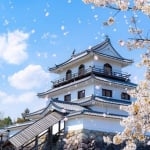
7 Must-Visit Tourist Spots in Shiroishi City, Miyagi — A Place of History and Rich Nature
-
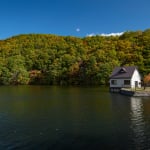
Shichikashuku Town is a Hidden Gem in Miyagi! A Thorough Explanation of Its 6 Must-See Attractions
-
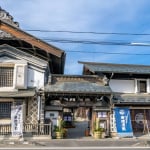
Enjoy Nature! 6 Recommended Tourist Spots in Marumori Town, Miyagi Prefecture
-
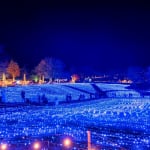
Explore Kamiyama Town in Miyagi Prefecture – 5 Recommended Tourist Spots to Enjoy Abundant Nature
-
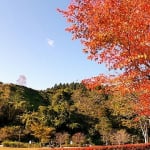
5 Recommended Tourist Spots in Ōsaki City, Miyagi Prefecture! Full of Nature-Rich Attractions!
MOST POPULAR ON miyagi
-
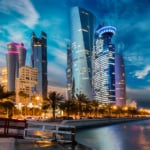 1
1Doha: Must-see Attractions in the Capital of Qatar
-
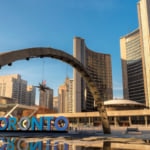 2
2Toronto: 10 Things to do in this Picturesque Canadian City
-
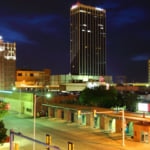 3
3Amarillo: A City Famous for It’s Amazing Canyons, Great History and Music
-
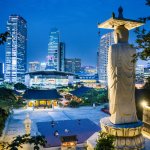 4
4South Korea: Dazzling Scenery, Rich Culture and Fascinating History
-
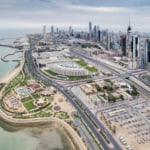 5
5Kuwait: A Country in Middle East Asia Famous for Hot Sand Dunes and Stunning Cityscape

